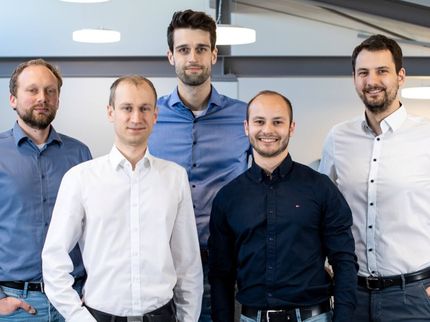Medical Technology - A Safe Haven for Volatile Industries
Advertisement
In times of economic uncertainty, industry groups from various sectors suffer from the volatility of their core businesses. Companies from sectors, such as electronics, automotive supply, plastics and others, often face threatening situations whenever the general economic climate is rough.
One of the many examples of companies that balanced their volatile businesses early on is Agilent, a company well known for their electronic test & measurement products. Agilent decided to launch a life sciences business unit in 2000. The new unit played an important part in keeping the company profitable despite the collapse of the electronic measurement unit’s profits during the financial crisis. This and other examples highlight the growing importance of medical technology as an attractive but stable market, which attracts industry groups from various fields. But which factors are responsible for the attractiveness of this market and which industries can benefit from an expansion into medical technology?
Strong Growth and Innovation
The global market for medical technology was valued at US$ 273 Bn in 2011. It showed high growth rates around 8% in recent years. The US market is by far the largest market followed by the Japanese and German markets. The Chinese market is small in comparison but is estimated to nearly double its size by 2016 compared to 2011.
Germany has a unique position in medical technology and the German market is by far the largest in Europe. It has been growing significantly in recent years and two thirds of sales are generated by exports. As such, Germany is the leading European exporter of medical technology, ranking second globally after the US.
One of the reasons for the high acceptance of German medtech products is the high degree of innovation. Currently 9% of revenues are spent on research and development in the German medtech industry, considerably more than in the German manufacturing industry overall (4%).
Profitability and Stability
In general, medical technology companies show high profitability with an average net profit margin in the industry around 14%. A commonly-found business model with high profitability is the “razor-blade” model. Profits are generated not by sales of devices but by sales of consumables to be used with the devices. The most common example is the glucose monitoring market, in which 90% of revenues are made with test strips and the devices are often provided for free. The same concept can be found with microarrays, various molecular diagnostic tests and even with surgical robots.
Even though the effects of the financial crisis were visible in the medical technology market, they were less pronounced compared to other industries. As mentioned previously, Agilent’s sales history provides a good example of this stability. Carl Zeiss AG is another example of a company from an outside industry, which was able to balance the losses it suffered during the financial crisis 08/09 with the profits it made in the medical technology sector. Specifically, Carl Zeiss’ very volatile semiconductor business could be balanced by the stable medtech business.
New Players Enter the Market
Robust growth and stability are some of the major reasons for an increasing engagement of many companies and industry groups in the medical technology market. Analyzing the distribution of industries, which completed large acquisitions in the medical technology sector in the last 10 years, reveals a heterogeneous picture. Besides buyers within medical technology and the financial sector, we also see pharmaceutical companies, industrial conglomerates, healthcare distributors, electronics companies and healthcare service providers. The interest within the pharmaceutical industry to expand into the more stable medtech sector arises from their traditional business suffering from patent expirations and the so-called “innovation gap”. As the end of the traditional blockbuster business model approaches, medical technology provides a welcome opportunity for diversification, which will lead to the two sectors growing closer together. In addition to the pharmaceutical sector, other industries, such as automotive suppliers or electronics companies, also show an increasing trend to expand into the medical technology market due to the high volatility of their core businesses. One example is the German engineering company Bosch, which had a presence on MEDICA - the world’s largest trade fair for medical technology - for the first time in 2009.
High Multiples in Medical Technology
The attractiveness of the medical technology market is also reflected by high prices for company acquisitions in this sector. The enterprise value to EBITDA multiple (EV/EBITDA; EV: Enterprise Value; EBITDA: Earnings Before Interest, Taxes, Depreciation and Amortization) is one of the measures used by private equity funds to find attractive takeover candidates. A comparison of the EV/EBITDA multiple between different industries reveals the highest median value (16.6) for medical technology.
Consequently, investors have already realized the attractiveness of the medical technology market highlighted in this article and are willing to pay high prices for market access. An extreme example for this is the acquisition of US based medical technology manufacturer Alcon Inc. by the pharmaceutical company Novartis AG for US$ 51.3 Bn.
Summary and Outlook
Medical technology is an attractive market with low volatility, above average margins and interesting business models. An expansion into the medical technology market can be particularly beneficial for high-tech companies and companies with high R&D expenditure. Regulatory barriers during the market approval process can be a disadvantage if a fast market entry is necessary. However, it can also be advantageous to create market entry barriers for competitors. Novumed Life Science Consulting has created a medtech atlas comprising more than 600 segments. The market is heterogeneous and along with devices and consumables, diagnostics and therapeutic applications, there are many other possibilities to enter the market. Whether a transfer of existing technologies or acquisition of a medical technology company is the right strategy needs to be evaluated very carefully.




























































